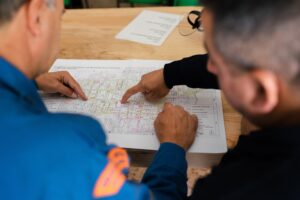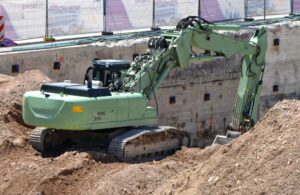Cost-effectiveness is one of the most important things to keep in mind in the ever-changing area of structural engineering. Cost-effective methods in structural design and consulting are used to cut down on project costs while also putting an emphasis on efficiency, sustainability, and new ideas. This detailed guide looks at a wide range of cost-effective strategies that structural engineers use. It covers new ways of designing, better ways to consult, and long-lasting solutions that get the most value for clients and stakeholders while keeping the safety and integrity of the structure.
How to understand cost-effective strategies:
There are many different cost-effective structure design and consulting methods that are all aimed at keeping project costs as low as possible while still maximising value and performance. During the design and consultation process, these methods require careful planning, coming up with creative solutions to problems, and making smart choices. Structural engineers can offer high-quality solutions that meet project goals within budget and legal limits by using new techniques, making the best use of materials, and streamlining work processes.

New ways to design things:
When it comes to structural engineering, new ways of designing things are very important for finding low-cost methods that maintain the structure’s strength and performance. These ways of doing things use cutting edge technologies, computer programmes, and creative ways of handling problems to go beyond normal ways of designing things. Let’s look at some of the creative ways that structural engineers use to create buildings:
Design Based on Performance:
Performance-based design is different from standard prescriptive methods because it focuses on meeting specific performance goals instead of strictly following the rules in the code. With this method, the structure’s performance is carefully examined under different loading situations, environmental factors, and risks. Using modern simulation and analysis tools, structural engineers can make sure that structural systems meet performance goals as efficiently as possible. This leads to cost-effective solutions that are tailored to the needs of the project.
When you use formulas and other computer tools for parametric design, you can come up with and compare different design options in a structured way. By setting a number of limits and parameters, structural engineers can look at a huge number of design choices and quickly judge how well they work. This iterative design method lets you make quick prototypes and improve structural systems, which leads to new ideas that are good looking, work well, and don’t cost too much.
Structures That Adapt and Respond:
Structures that adapt and respond use dynamic parts and smart systems that change based on user needs and changing weather conditions. These buildings use sensors, actuators, and high-tech materials to change their shape, stiffness, or arrangement in response to things like wind, temperature, or people walking on them. By using smart technologies and biomimetic ideas together, structure engineers can make buildings and bridges that make the best use of resources, make people more comfortable, and keep costs down over their entire life.
Modular and Prefabricated Construction:
Buildings can be put together more quickly, with fewer workers, and with better quality control when they are made using modular and prefabricated construction methods. Structural engineers work with builders and manufacturers to create modular parts that can be made off-site and put together on-site with little trouble. Compared to traditional building methods, this method not only speeds up project completion but also lets you make changes, be more flexible, and save money.
Biologically Inspired Design:
Biologically inspired design uses biological processes and the rules of nature to help create new ways to build things. By looking at how natural ecosystems and organisms change and work efficiently, structural engineers can copy biological forms, patterns, and processes to make structures work better and use resources more efficiently. Biomimetic design principles are used for many things, like making buildings that are light, materials that can heal themselves, and strong infrastructure systems.
Generative Design:
This method uses methods and machine learning techniques to look into huge design spaces and come up with the best solutions based on set goals and limits. Using generative design software, structural engineers enter design parameters, performance criteria, and environmental factors. The software then creates and evaluates thousands of design possibilities over and over again. Using this data-driven method, structural engineers can find new ways to create buildings that use less material, work better, and cost less over their whole life.
Innovative design methods give structural engineers the tools they need to be more creative, efficient, and environmentally friendly in their work. By using new technologies, computer programmes, and working with people from different fields, structural engineers can come up with low-cost solutions that not only meet the needs of the project but also spark new ideas and shape the built environment’s future.
Effective Consultation Methods:
Effective consultation methods are needed to improve communication, encourage teamwork, and get the most out of the structure design process. To make sure that project goals are met quickly and correctly, these practices include proactive involvement, coordination across disciplines, and clear communication between all project partners. Let’s look at some effective ways that structural engineers use to discuss with clients:
Early Participation:
Including structural engineers early on in the project creation process makes it easier to find ways to save money and reduce risk. By working together with architects, developers, and other project partners from the start, structural engineers can have a say in important design choices and find the best structural solutions to meet project goals and budgets.
Integrated Design Teams:
Integrated design teams make it easier for professionals from different fields to work together, such as pros in structural engineering, architecture, and construction. Integrated design teams make it easier to make decisions, find synergies, and come up with cost-effective solutions that meet all of a project’s complicated needs by encouraging open communication and teamwork.

Value-Driven Consultation:
The main goal of value-driven consultation is to make sure that design choices are in line with the client’s values and the project’s goals, like budget, schedule, and performance standards. Structural engineers work closely with clients to fully understand their wants, needs, and limitations. They then help clients make decisions that will best meet their needs and provide the best value and return on investment.
Collaborative Design Workshops:
In these sessions, people from different fields work together to come up with ideas, look at different design options, and agree on the project’s goals and needs. These classes are led by structural engineers who talk about things like how to build something, what materials to use, and how to make sure everything runs smoothly. Collaborative design classes help everyone understand the project goals and work together across departments by encouraging open communication and teamwork. This results in more efficient and successful project outcomes.
BIM Collaboration:
Building Information Modelling (BIM) collaboration tools let architects, engineers, contractors, and owners work together and coordinate on projects in real time. BIM technology is used by structural engineers to make thorough 3D models of structural systems, look at different design options, and work with people from other fields to solve problems that come up. During the design and building process, structural engineers can improve communication, coordination, and project efficiency by using BIM collaboration tools.
Clear lines of communication:
Clear communication routes are necessary to make sure that everyone involved in the project can get the information they need. Clear lines of contact are set up between structural engineers, clients, architects, contractors, and regulatory authorities so that decisions can be made quickly, concerns can be addressed, and problems can be solved as they come up. By keeping lines of communication open and clear, structural engineers can help everyone involved in a project trust, work together, and take responsibility for their actions. This will eventually lead to faster project completion and better results.
Sustainable Solutions:
Because of rising environmental worries and the need to protect resources, structural engineers are adding more and more sustainable solutions to their projects. The goal of these methods is to minimise the damage to the environment while increasing the benefits to society and the economy. They do this by focusing on environmental responsibility, energy efficiency, and long-term resilience. Let’s look at some of the most important green options that structural engineers support:
Material Optimization:
This means choosing materials that are both strong and don’t cost too much while also having the least amount of waste and negative effects on the earth. Structural engineers look at different building materials, methods, and ways of making things to find long-lasting solutions that lower the cost of materials, the amount of energy used, and carbon emissions without affecting the strength or performance of the structure.
Energy-Efficient Design:
This type of design uses both passive and active methods to keep energy use and prices as low as possible over the life of the building. Structural engineers work with architects and mechanical engineers to make sure that the orientation, envelope design, and HVAC systems of a building are as efficient as possible. They do this by using natural ventilation, daylighting, and renewable energy sources to make the building more energy efficient and lower its long-term running costs.
Life Cycle Cost Analysis:
This method figures out how much it will cost to own a building over its whole life, taking into account the costs of creation, running the building, and maintaining it. To find the most cost-effective solutions for their customers, structural engineers do thorough cost analyses of all the design options they are presented with. They look at things like durability, upkeep needs, and energy efficiency.
Conclusion:
For high-quality, long-lasting, and financially viable projects, it’s important to use cost-effective methods in structural design and consultation. Structural engineers can improve project results, cut costs, and get the most value for clients and stakeholders by using new design methods, effective consultation methods, and long-lasting solutions. Structure engineers are very important in shaping the built environment and making decisions that are good for the economy and the environment for future generations. They do this by being bold, working with people from different fields, and making decisions based on values.
